First off, I want to give a big thank-you to StoneGirl, Kevin, Joshua, Mimi, and others (past and current) on this forum who have given us many words of wisdom concerning stone countertops.
I've tried to compile everything I saved over the past 8 months that I've been on this Forum. Most of it was taken from a write-up by StoneGirl (Natural stone primer/granite 101); other threads and sources were used as well.
So...if the experts could review the information I've compiled below and send me comments (here or via email), I will talk to StarPooh about getting this on the FAQ.
Stone Information, Advice, and Checklists:
In an industry that has no set standards, there are many unscrupulous people trying to palm themselves off as fabricators. There are also a number of people with odd agendas trying to spread ill rumors about natural stone and propagate some very confusing and contradictory information. This is my small attempt at shedding a little light on the subject.
Slab Selection:
On the selection of the actual stone slabs - When you go to the slab yard to choose slabs for your kitchen, there are a few things you need to take note of:
Surface finish: The finish - be it polished, honed, flamed antiqued, or brushed, should be even. There should be no spots that have obvious machine marks, scratches, or other man made marks. You can judge by the crystal and vein pattern of the stone if the marks you see are man-made or naturally occurring. It is true that not all minerals will finish evenly and if you look at an angle on a polished slab with a larger crystal pattern, you can clearly see this. Tropic Brown would be a good example here. The black spots will not polish near as shiny as the brown ones and this will be very obvious on an unresined slab when looking at an acute angle against the light. The black specks will show as duller marks. The slab will feel smooth and appear shiny if seen from above, though. This effect will not be as pronounced on a resined slab.
Bottom line when judging the quality of a surface finish: Look for unnatural appearing marks. If there are any on the face of the slab, it is not desirable. They might well be on the extreme edges, but this is normal and a result of the slab manufacturing process.
- Mesh backing: Some slabs have a mesh backing. This was done at the plant where the slabs were finished. This backing adds support to brittle materials or materials with excessive veining or fissures. A number of exotic stones will have this. This does not necessarily make the material one of inferior quality, though. Quite often, these slabs will require special care in fabrication and transport, so be prepared for the fabricator to charge accordingly. If you are unsure about the slabs, ask your fabricator what his opinion of the material is.
- Cracks and fissures: Yes - some slabs might have them. One could have quite the discussion on whether that line on the slab could be one or the other, so I'll try to explain it a little.
Fissures are naturally occurring features in stone. They will appear as little lines in the surface of the slabs (very visible in a material like Verde Peacock) and could even be of a different color than the majority of the stone (think of those crazed white lines sometimes appearing in Antique Brown). Sometimes they could be fused like in Antique Brown and other times they could be open, as is the case in the Verde Peacock example. They could often also go right through the body of the slab like in Crema Marfil, for instance. If you look at the light reflection across a fissure, you will never see a break - i.e., there will be no change in the plane on either side of a fissure.
A crack on the other hand is a problem... If you look at the slab at an oblique angle in the light, you will note the reflection of the shine on the surface of the stone. A crack will appear as a definite line through the reflection and the reflection will have a different appearance on either side of the line - there will be a break in the plane. Reject slabs like this. One could still work around fissures. Cracks are a whole other can of worms.
Resined slabs: The resin gets applied prior to the slabs being polished. Most of the resin then gets ground off in the polishing process. You should not be able to see just by looking at the surface of a slab whether it was resined or not. If you look at the rough sides of the slab, though, you will see some drippy shiny marks, almost like varnish drips. This should be the only indication that the slab is resined. There should never be a film or layer on the face of the stone. With extremely porous stones, the resining will alleviate, but not totally eliminate absorption issues and sealer could still be required. Lady's dream is an example. This material is always resined, but still absorbs liquids and requires sealer.
Test the material you have selected for absorption issues regardless - it is always best to know what your stone is capable of and to be prepared for any issues that might arise. Some stones indeed do not require sealer - be they resined or not. Baltic Brown would be an example here. It will not absorb one iota of anything, but it is still resined to eliminate a flaking issue.
Tests (especially for Absolute Black) (using a sample of YOUR slab):
To verify you have true AB and not dyed: Clean with denatured alcohol and rub marble polishing powder on the face. (Get denatured alcohol at Home Depot in the paint department)
Lemon Juice or better yet some Muratic Acid: will quickly show if the stone has alot of calcium content and will end up getting etched. This is usually chinese stone, not indian.
Acetone: The Dying usually is done on the same chinese stone. like the others said, acetone on a rag will reveal any dye that has been applied
Chips: Using something very hard & metalhit the granite sharply & hard on edges to see if it chips, breaks, or cracks
Measuring:
- Before the templaters get there...
Make sure you have a pretty good idea of your faucet layout--where you want the holes drilled for all the fixtures and do a test mock up to make sure you have accounted for sufficient clearances between each fixture.
Be sure you test your faucet for clearances not just between each fixture, but also between the faucet and the wall behind the faucet (if there is one). You need to be sure the handle will function properly.
Make sure that the cabinets are totally level (not out by more than 1/8") before the counter installers come in.
Check how close they should come to a stove and make sure the stove sits up higher than the counter.
Make sure they have the sink/faucet templates to work from.
Make sure have your garbage disposal air switch on hand or know the diameter
If you are not putting in a backsplash, tell them
Double check the template. Make sure that the measurements are reasonable. Measure the opening for the range.
Seam Placement: Yet another kettle of fish (or can of worms, depending on how you look at it, I guess!) Seam placement is ultimately at the discretion of the fabricator. I know it is not a really popular point of view, but that is just the way it is. There really is more to deciding where the seam would go than just the size of the slab or where the seam would look best in the kitchen.
Most stone installations will have seams. They are unavoidable in medium or large sized kitchens. One hallmark of a good fabricator is that they will keep the seams to a minimum. It seems that a good book could be written about seams, their quality, and their placementÂand still you will have some information that will be omitted! For something as seemingly simple as joining two pieces of stone, seams have evolved into their own universe of complexity far beyond what anybody should have fair cause to expect!
Factors determining seam placement:
The slab: size, color, veining, structure (fissures, strength of the material an other characteristics of the stone)
Transport to the job site: Will the fabricated pieces fit on whatever vehicle and A-frames he has available
Access to the job site: Is the house on stilts? (common in coastal areas) How will the installers get the pieces to where they need to go? Will the tops fit in the service elevator if the apartment is on the 10th floor? Do the installers need to turn tight corners to get to the kitchen? There could be 101 factors that will influence seam placement here alone.
Placement and size of undermount (or other) cut-outs. Some fabricators like to put seams in undermount sinks, some do not. We, for instance will do it if absolutely necessary, and have done so with great success, but will not do so as general practice. We do like to put seams in the middle of drop-in appliances and cut-outs and this is a great choice for appearances and ease of installation.
Location of the cabinets: Do the pieces need to go in between tall cabinets with finished sides? Do the pieces need to slide in under appliance garages or other cabinetry? How far do the upper cabinets hang over? Is there enough clearance between the vent hood and other cabinets? Again the possibilities are endless and would depend on each individual kitchen lay-out and - ultimately -
Install-ability of the fabricated pieces: Will that odd angle hold up to being moved and turned around to get on the peninsula if there is no seam in it? Will the extra large sink cut-out stay intact if we hold the piece flat and at a 45 degree angle to slide it in between those two tall towers? Again, 1,001 combinations of cabinetry and material choices will come into play on this question.
You can ask your fabricator to put a seam at a certain location and most likely he will oblige, but if he disagrees with you, it is not (always) out of spite or laziness. Check on your fabricator's seams by going to actual kitchens he has installed. Do not trust what you see in a showroom as sole testament to your fabricator's ability to do seams.
With modern glues and seaming methods, a seam could successfully be put anywhere in an installation without compromising the strength or integrity of the stone. If a seam is done well, there is - in theory - no "wrong" location for it. A reputable fabricator will also try to keep the number of seams in any installation to a minimum. It is not acceptable, for instance to have a seam in each corner, or at each point where the counter changes direction, like on an angled peninsula.
Long or unusually large pieces are often done if they can fit in the constraints of a slab. Slabs as a rule of thumb will average at about 110"x65". There are bigger slabs and quite often smaller ones too. Check with the fabricator or the slab yard. They will be more than happy to tell you the different sizes of slabs they have available. Note, though, that the larger the slabs, the smaller the selection of possible colors. Slab sizes would depend in part on the capabilities of the quarry, integrity of the material or the capabilities of the machinery at the finishing plant. We have had slabs as wide as 75" and as long as 130" before, but those are monsters and not always readily available.
Generally, it is not a good idea to seam over a DW because there's no support for the granite, and anything heavy placed at or near the seam would stress the stone, possibly breaking it.
Rodding is another issue where a tremendous amount of mis-information and scary stories exist: The main purpose for rodding stone would be to add integrity to the material around cut-outs. This is primarily for transport and installation and serves no real purpose once the stone is secured and fully supported on the cabinets. It would also depend on the material. A fabricator would be more likely to rod Ubatuba than he would Black Galaxy, for instance. The flaky and delicate materials prone to fissures would be prime candidates for rodding. Rodding is basically when a fabricator cuts slots in the back of the stone and embeds steel or fiberglass rods with epoxy in the slots in the stone. You will not see this from the top or front of the installation. This is an "insurance policy" created by the fabricator to make sure that the stone tops make it to your cabinets all in one piece
Edges: The more rounded an edge is, the more stable it would be. Sharp, flat edges are prone to chipping under the right (or rather wrong) circumstances. Demi or full bullnose edges would almost entirely eliminate this issue. A properly milled and polished edge will be stable and durable regardless of the profile, though. My guess at why ogee and stacked edges are not more prevalent would be purely because of cost considerations. Edge pricing is determined by the amount of work needed to create it. The more intricate edge profiles also require an exponentially larger skill set and more time to perfect. The ogee edge is a very elegant edge and can be used to great effect, but could easily look overdone if it is used everywhere. We often advise our clients to combine edges for greater impact - i.e., eased edge on all work surfaces, and ogee on the island to emphasize the cabinetry or unusual shape.
Edge profiles are largely dependent on what you like and can afford. There is no real pro or con for regular or laminated edges. They all have their place in the design world. Check with your fabricator what their capabilities and pricing are. Look at actual kitchens and ask for references.
Installation:
A generic good quality seam should have the following characteristics:
It should be flat. According to the Marble Institute of America (MIA) a minimal amount of lippage is acceptable (1/32"), but conscientious fabricators all strive for a perfectly flat and smooth joint.
It should be narrow - as in smaller than 1/16". (I think the MIA stipulates no larger than 1/8", but that is pushing it - and only if the fabricator bevels the edges of the seam, almost similar to the edge of a stone tile. This is, thank goodness, not a standard practice any more!)
The color on either side of the seam should match as closely as possible. On regularly patterned stones like Ubatuba for example - there should be no variation. On stones with variation in colors or veins, the match should be made as close as was humanly possible.
Vein direction should flow. The MIA suggests a single direction of vein flow, but it is acceptable IF DISCUSSED WITH THE CLIENT to change vein direction on a seam if no other option is available. This would happen in book matched slabs - you will have a "butterfly" seam in this case. In other cases, the fabricator could put a miter seam in a corner and change vein direction 90 degrees. This is usually done with extremely linear veining like Bamboo Green, for example, but this is something that should be discussed with the fabricator and agreed upon by the client.
The seam on the finished edge of the stone should NOT dip in and create a divot in the edge. When you run your fingers over the edge, you should not be able to feel the location of the seam at all.
The thickness of the slabs on either side of the seam should be equal (or feathered out so that there is no discernible difference)
The glue in the seam should be of a color that matches the stone as closely as possible. Glue joints that are too light or too dark will show up something terrible. The idea behind tinting the glue is to try to make the seam "disappear" or something relatively close to it
Checklist:
Make sure the sink reveal is consistent all the away around
Check the gap of the granite at the wall junctions.
Check for inconsistent overhangs from the counter edges
Check for chips. These can be filled.
Make sure the top drawers open & close
Make sure that you can open & close your dishwasher
Make sure the stove sits up higher than the counter
Make sure that you have the appropriate clearances for your appliances
Check the edge all around, a good edge should have the following characteristics:
Shine: The edge polish should match the top polish in depth and clarity. The edge should not be milky, dull, or waxy.
The edge should not have "waves". Eyeball along the edge. A good edge should have a mirror like reflection and be fairly flat. Waves that you can see or feel are not a good thing.
The aris (very top of the edge) should be crisp and straight, even on a bullnose edge. Once again you can see this by eyeballing along the very top end of the edge profile. A wavy, dippy aris is poor craftsmanship.
A good edge will have a consistent profile. It will not be larger in some spots or smaller in others.
A good edge should also have NO tooling lines. These will be fine lighter/white lines running along the edge. This is a mark of a poor edge polish, of a CNC machine that is not set correctly, and a lack of hand finishing. This is common when a company has only mechanical fabrication (i.e., CNC machines or line polishers) and no skilled hand fabricators to finish the work properly.
Run your hands around the entire laminated edge of yor counters to make sure they are smooth
Check surrounding walls & cabinets for damage
Miscellaneous Information:
More than all the above and below, though, is to be present for both the templating as well as having the templates placed on your slabs at the fabricator's
If you canot be there, then have a lengthy conversation about seam placement, ways to match the movement, and ways to color-match the counters that will be joined at the seam
Find a fabricator who is a member of the SFA
When they polish your stone for you don't let them wax it. It will look terrible in 2 months when the wax wears off.
Don't use the Magic Eraser on granite--especially AB
Any slab with more fill (resin) than stone is certainly a no-no!!
When you do check for scratches, have overhead lighting shining down so scratches are easier to see
Don't let them do cutouts in place (granite dust becomes a major issue)
Granite dust can be a problem...some have heard of SS appliances & hoods damaged by the dust, others have heard of drawer glides being ruined by the dust
If you have wood floors--especially if you're in the process of staining or finishing them--make sure that they don't spill or drip granite sealer on the wood floors. Apparently the sealer interferes with the stain or finish process.
Suggested Prep for Installation:
Remove any drawers and pullouts beneath any sections that will be cut or drilled onsite, e.g., sink cutouts and/or faucet, soap dispenser, air gap, instant hot etc. holes, cooktop cutouts.
Then just cover the glides themselves with a few layers of blue painter's tape (or some combo of plastic wrap and tape)
If you make sure to cover the top of the glides and attach some of the tape to the cab wall as well (to form sort of a seal)and cover the rest of the glides completely with tape, you should be fine.
Usually the fabricators will have someone holding a vacuum hose right at the spot where they are drilling or cutting, so very little granite dust should be landing on the glides. What little dust escapes the vacuum will be blocked by the layer(s) of tape.
When done w/installation, remove the tape and use a DustBuster (or similar) on all the cabinets and glides
Countertop Support:
If your granite is 2 cm thick, then there can be no more then 6" of of unsupported span with a 5/8" subtop
If your granite is 3 cm thick, then there can be no more then 10" of unsupported span - no subtop required
If you need support, the to determine your corbel dimensions:
Thickness of Stone - Dimension of Unsupported Span = Corbel Dimensino
i.e., an 18" total overhang in 2 cm would require a 12" corbe; the same overhang in 3 cm would require an 8" corbel

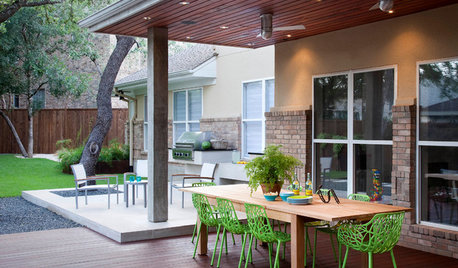


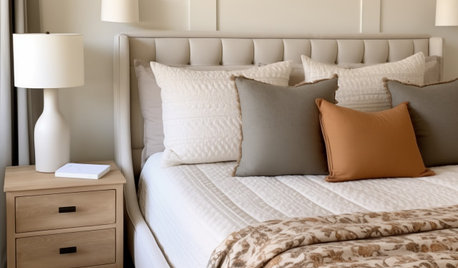


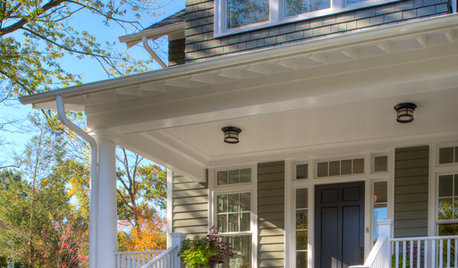
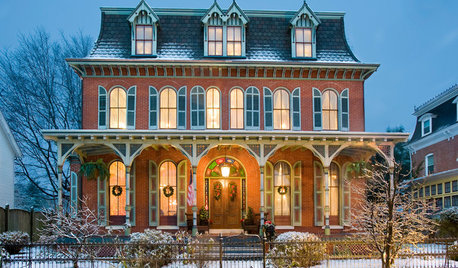
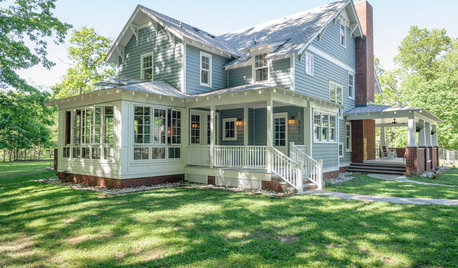





BuehlOriginal Author